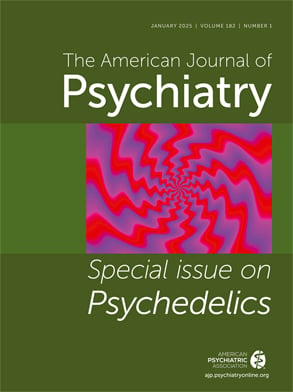The explosive rate of development in neuropsychiatry and behavioral neurosciences, while thrilling in its scientific and clinical implications, presents numerous challenges to both clinicians and textbook editors. In their desire to remain abreast of emerging data and technologies, practitioners often feels thwarted by a massive flood of information. The need for a one-stop resource for navigating the cognitive, emotional, and behavioral implications of neuropsychiatric illness is readily apparent. Alas, textbook editors face their own set of challenges, namely synthesizing all this information into one useful tool, one that accurately reflects the state of the science while remaining accessible to clinicians and applicable to their day-to-day practices. Such is the delicate balance struck by Yudofsky and Hales in compiling the fifth installment of their neuropsychiatric treatise.
In deference to the newly available subspecialty certification and the existing union between neuropsychiatrists and behavioral neurologists, the editors have opted for the current title, featuring “behavioral neurosciences” in place of “clinical neurosciences.” While the title is only one of several changes, the quality and utility of the preceding editions endure. The present edition effectively builds upon prior versions, incorporating the most vital scientific and clinical developments from recent years. At the same time, the editors mindfully clean shop, carefully combining and eliminating sections and material to avoid uncontrolled expansion of what is admittedly an intimidating volume in size and scope. Surely, there will be some ambivalence surrounding decisions to strike certain sections, but the necessity is illustrated in the fact that since its original edition, the text has grown from 490 pages to 1,360 pages, which is actually slightly smaller than the fourth edition. It should come as little surprise that significant developments in basic neuroscience, electrophysiologic and imaging technologies, and the genetic aspects of neuropsychiatric disorders account for a considerable proportion of the new material. Some readers will lament the loss of some of the fourth edition’s focused chapters, such as those on basic sleep mechanisms and legal issues in neuropsychiatry.
Despite the carefully considered changes, the fifth edition remains true to the thoughtful progression of sections and chapters featured in earlier versions. The text begins with basic principles of neuroscience and lays a solid foundation with elements of cellular biology, neural anatomy, and neural interactions with endocrine and immune systems. From there, the focus shifts to neuropsychiatric assessment, including clinical examination, electrodiagnostic techniques, structural and functional imaging, and neuropsychological testing. The chapters on electrodiagnostic techniques and neuroimaging deftly recreate the excitement surrounding the new frontiers and scientific developments related to these technologies while not getting swept up in it; the authors appropriately temper enthusiasm with realistic clinical applications for present practice. Part 3 of the text transitions into neuropsychiatric symptomatology, with specific chapters addressing pain, attention, delirium, aphasia, aggression, and memory.
Next comes the workhorse section on various neuropsychiatric disorders, which provides a nearly exhaustive array of conditions potentially impacting a patient’s cognition, emotion, and behavior. The section opens with an excellent chapter on traumatic brain injury, one that reasonably represents the organization and high quality featured throughout this book. The topic is introduced with discussions of epidemiology and pathophysiology and progresses into clinical assessment, complete with recommendations for appropriate diagnostic tools, ranging from simple bedside exams and scales to evolving laboratory and imaging options. Therapeutic strategies are comprehensively reviewed and methodically entrenched in evidence-based approaches. When evidence is lacking, as is often the case in this relatively new field, thoughtful recommendations are synthesized from the available literature and related conditions. The biopyschosocial model is well represented, with multimodal and multidisciplinary avenues to therapy prominently featured. This is particularly true of the final section of the book, which offers a broad overview of neuropsychiatric treatment and existing options in psychopharmacology, psychotherapy, and cognitive rehabilitation.
The target audience for this textbook is broad, although the condensation of voluminous data into tightly packed chapters will make for dense reading among those less initiated in neuropsychiatry. However, for those with more experience in the field, chapters will prove to be efficient, informative, and very readable. Novices and veterans alike will agree that the richly referenced text and recommended readings provide a veritable galaxy of material for seemingly infinite exploration. Whether used by the beginner neuropsychiatrist to build a proper foundation or by the more seasoned expert to bridge gaps in an established knowledge base, efforts invested with this text will be realized and rewarded. Scientists and clinicians alike are also well served, with identifiable links that tie the captivating discoveries emerging from laboratories to the emerging evidence-based practices enacted in clinics. Surely, much of the fascination surrounding this exciting field stems from its ability to seamlessly embrace and blend seemingly divergent ideas, like the brain and the mind or science and philosophy. This textbook’s success largely lies in its ability to do the same, boldly encompassing so much of what the behavioral neurosciences have to offer in our efforts to comprehend human cognition, behavior, and emotion and to mitigate suffering when these critical human functions falter.

